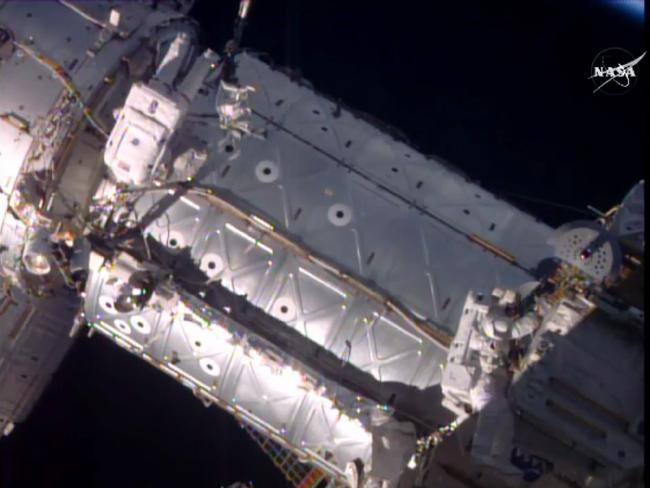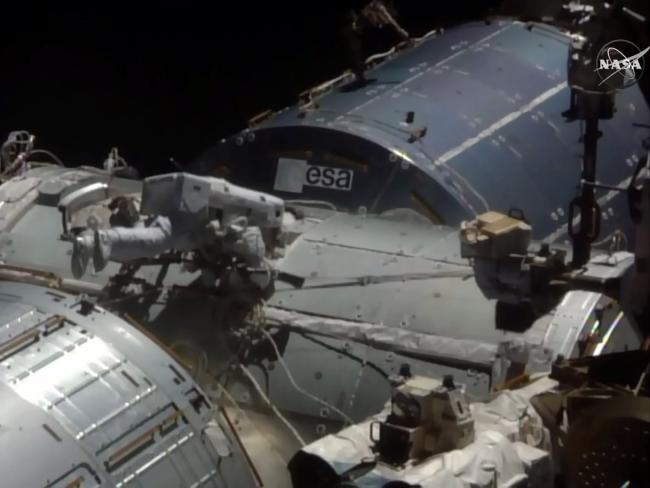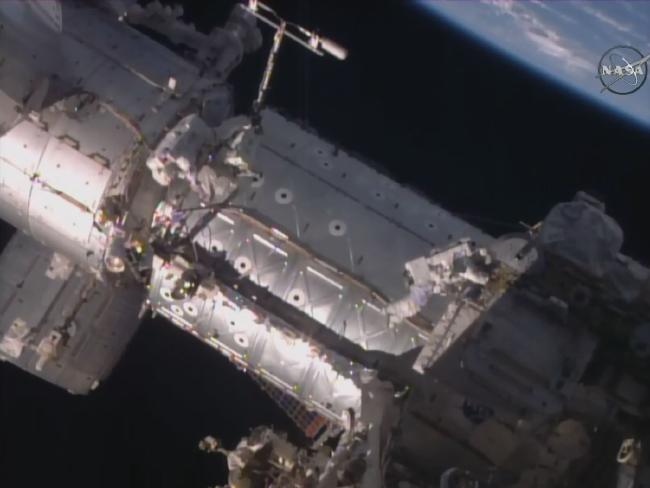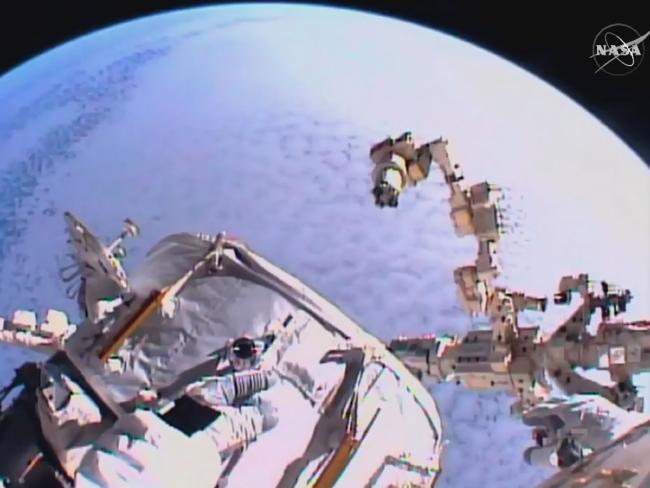
US astronaut Kate Rubins viewed near the docking port at the International Space Station. Source: AFP
WITH more private spaceship traffic expected at the International Space Station in the coming years, two US astronauts embarked on a space walk to install a special parking spot for them.
Americans Jeff Williams and Kate Rubins switched their spacesuits to internal battery power and floated outside the orbiting laboratory to begin the work of attaching the first of two international docking adaptors.
The spacewalkers finished the task in just over two hours.
Then, robotic machinery at the space station completed the hard mate, making the attachment permanent.

American astronauts Jeffrey Williams, left, and Kate Rubins taking a space walk to hook up a docking port outside the International Space Station. Source: APSource:AP
“With that, we have a new port of call,” said NASA commentator Rob Navias, as the space station flew over Singapore.
More work lies ahead in the six-and-a-half-hour space walk for the astronauts, who must also connect power and data cables for the adaptor.
These fittings will enable the space station to share power and data with visiting spaceships.
Williams is making his fourth career space walk. He has accumulated 19 hours of space walk time so far.
The space walk is Ms Rubins’s first. She is the 12th woman to walk in space.

Kate Rubins viewed near the docking port. Source: AFPSource:AFP
‘Gateway to future’
NASA describes the docking adaptor as a “metaphorical gateway to a future” that will allow a new generation of US spacecraft — the first since the space shuttle program ended in 2011 — to carry astronauts to the space station.
The second docking adaptor is expected to be installed in 2018. ISS operations integration manager Kenneth Todd called Friday’s installation a “very significant milestone on the path to establishing commercial crew capability.” Built by Boeing, the circular adaptor measures around 42 inches (one metre) tall and about 63 inches wide.

Kate Rubins, right, and Jeff Williams viewed near the docking port. Source: AFPSource:AFP
The adaptors will work with Boeing’s CST-100 Starliner and SpaceX’s Crew Dragon, two spaceships under construction that are planned to ferry astronauts to the space station.
The docking adaptor is more sophisticated than past equipment because it will allow automatic parking instead of the current grapple and berthing process, which is managed by astronauts.

Kate Rubins, bottom, and Jeff Williams making repairs. Source: AFPSource:AFP
Space walk
During the last US space walk was on January 15, a problem with American Tim Kopra’s spacesuit allowed a small amount of water to build up inside his helmet by the end of the outing.
It was the latest in a series of spacesuit issues, but was not as severe as an emergency in 2013 when Italian astronaut Luca Parmitano’s helmet flooded, forcing him to end his space walk early.
NASA commentator Rob Navias said the US space agency has done a thorough review of the spacesuits being worn by Rubins and Williams, and they are in “excellent shape” for Friday’s space walk.

Kate Rubins adjusts cables. Source: AFPSource:AFP
NASA is planning another space walk on September 1 to retract one of the thermal radiators outside the space station.
Astronauts unsuccessfully tried to push it back into position last year.







